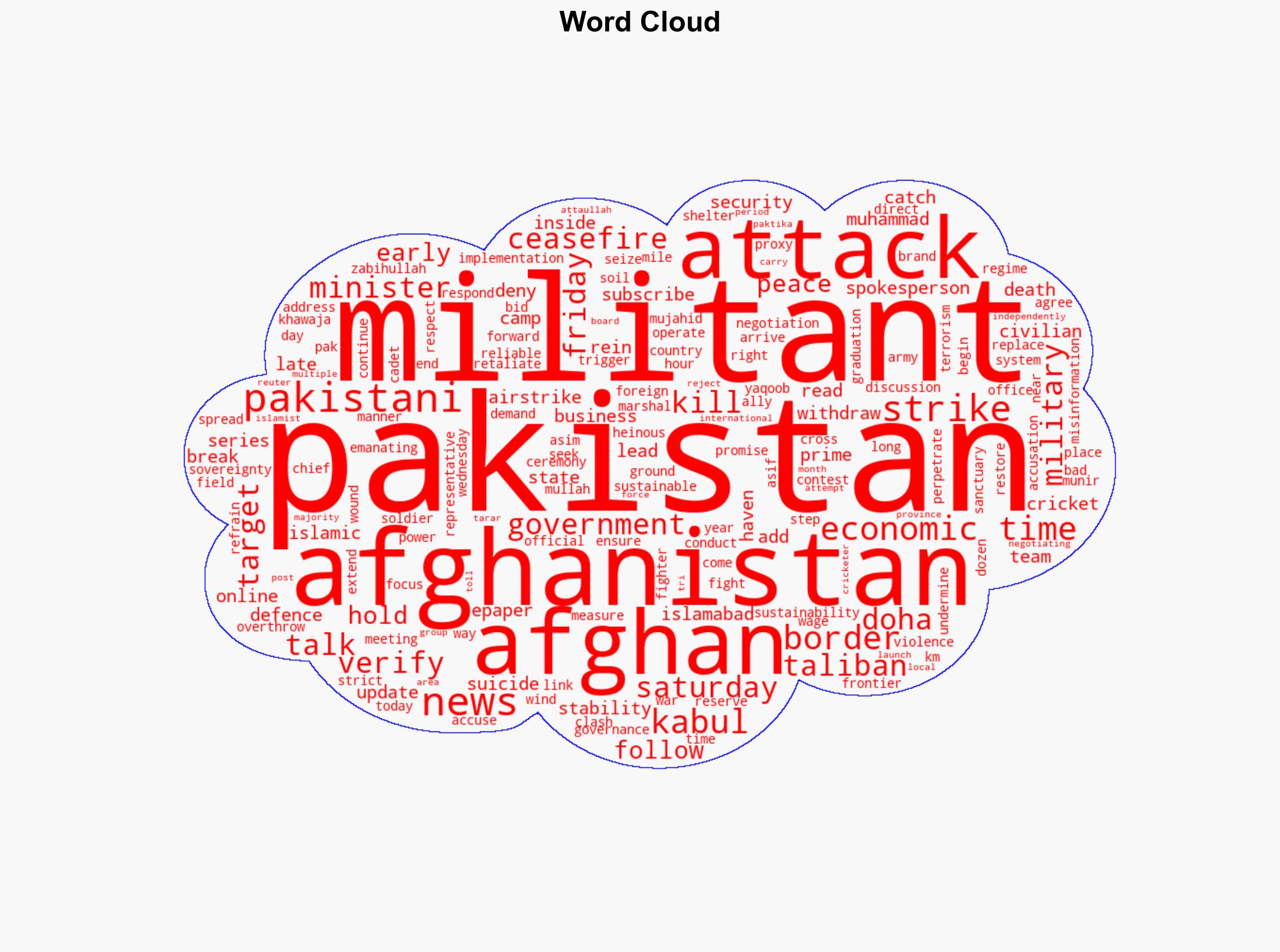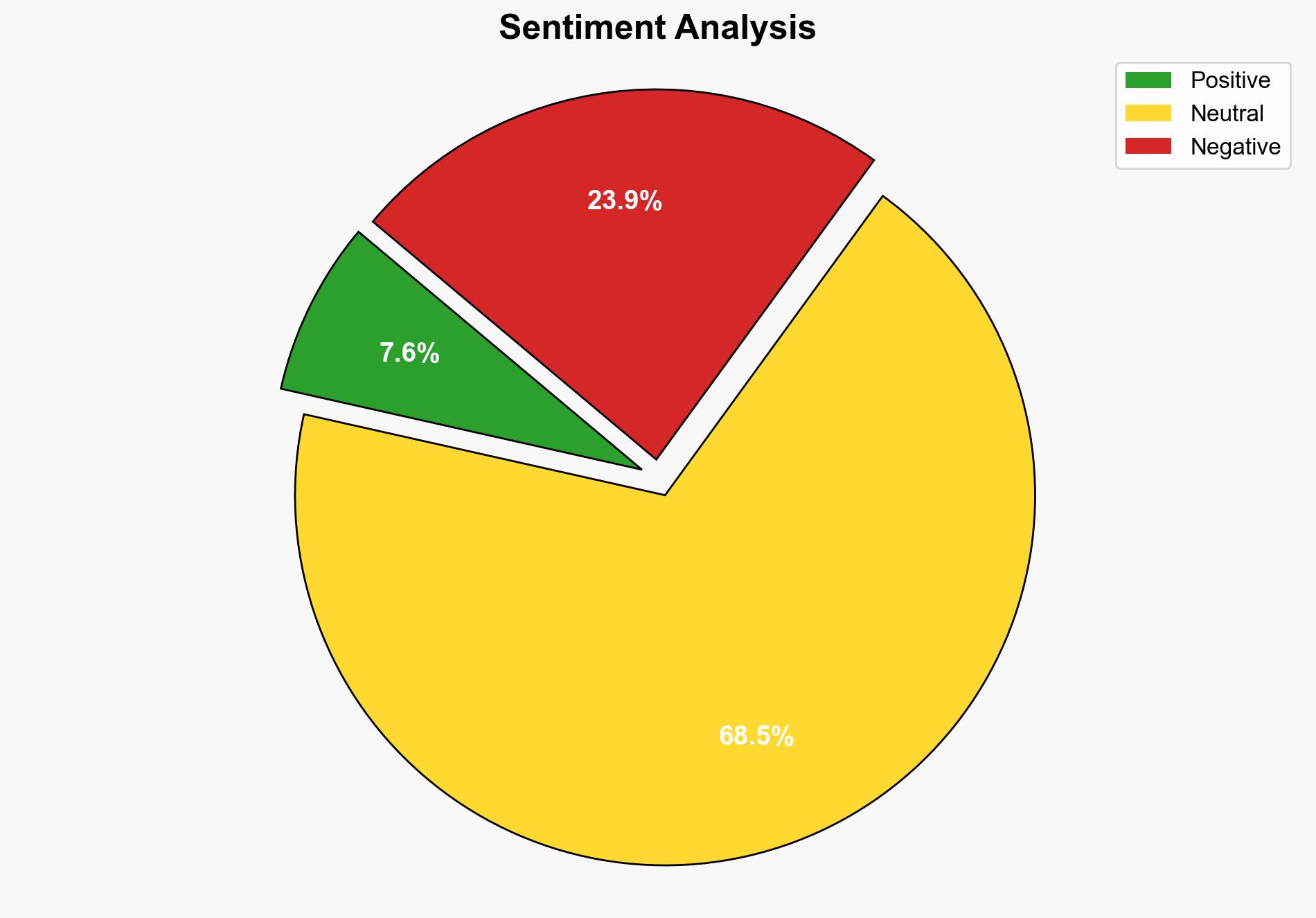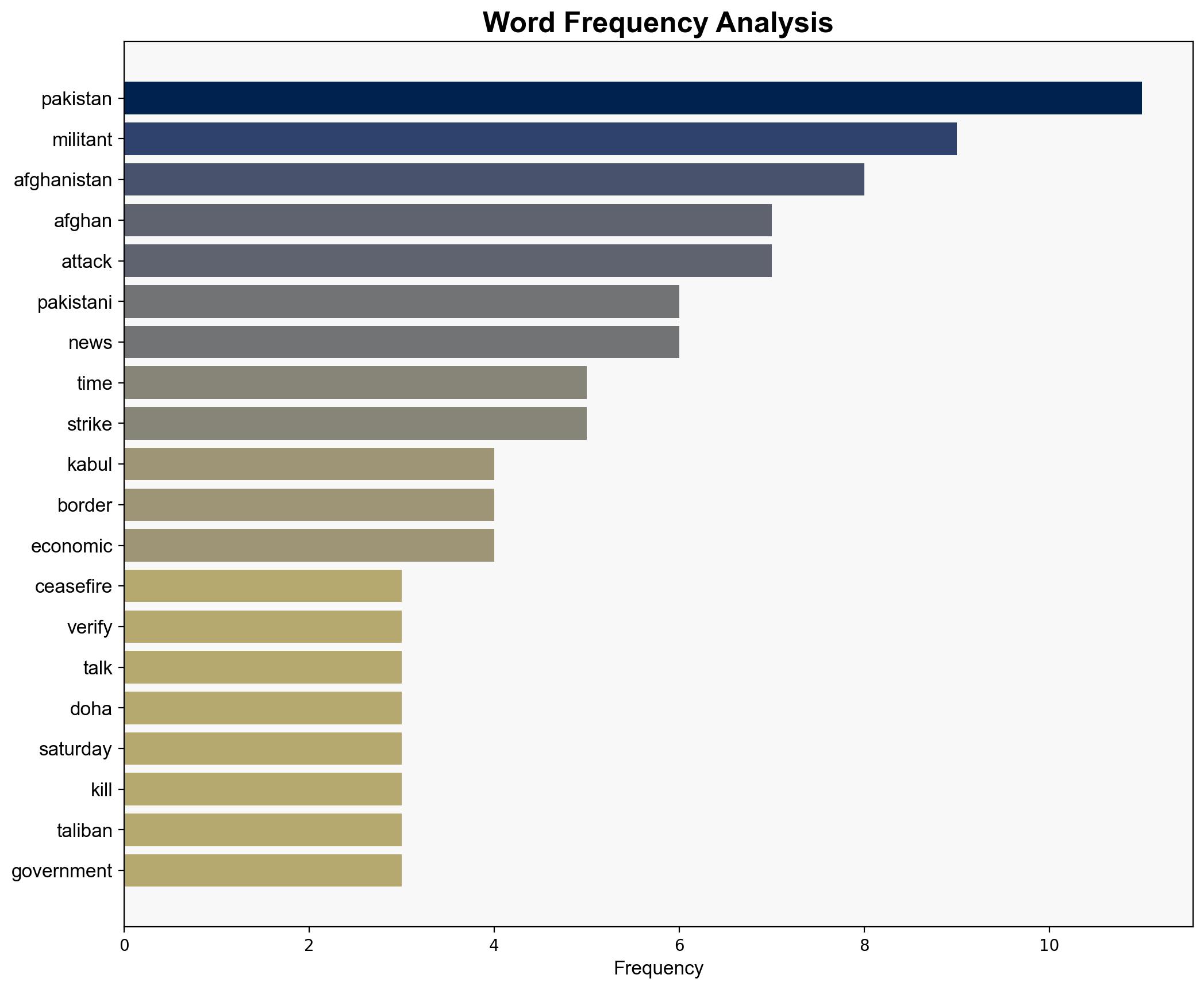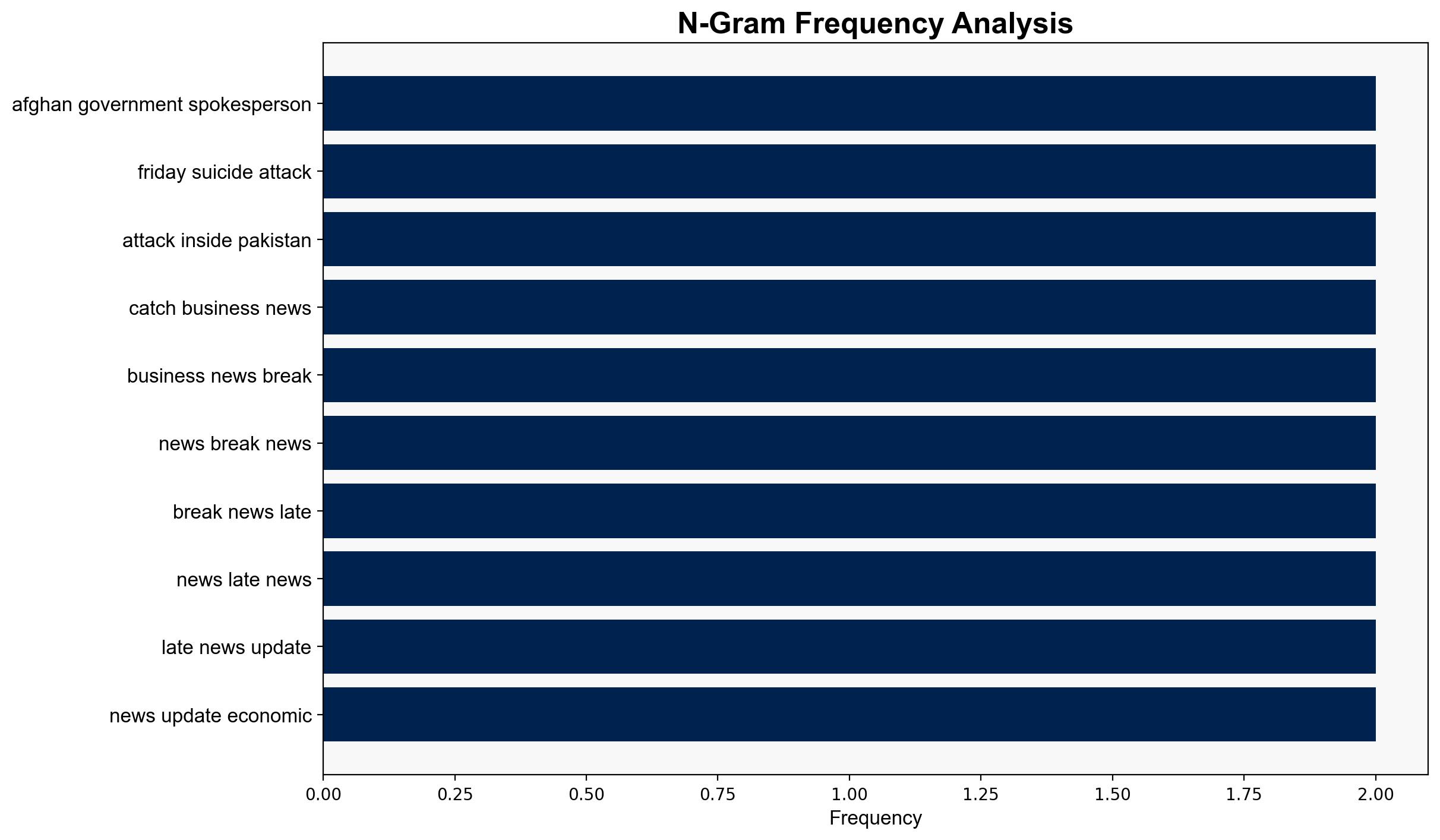Pakistan and Afghanistan agree to immediate ceasefire after peace talks in Doha – Japan Today
Published on: 2025-10-19
Intelligence Report: Pakistan and Afghanistan agree to immediate ceasefire after peace talks in Doha – Japan Today
1. BLUF (Bottom Line Up Front)
The most supported hypothesis is that the ceasefire agreement between Pakistan and Afghanistan is a tactical move to de-escalate immediate tensions and manage international perceptions, rather than a long-term commitment to peace. Confidence level: Moderate. Recommended action: Monitor compliance closely and prepare for potential resumption of hostilities.
2. Competing Hypotheses
1. **Hypothesis A**: The ceasefire is a genuine step towards long-term peace and stability, driven by mutual recognition of the unsustainable nature of ongoing conflict and international pressure.
2. **Hypothesis B**: The ceasefire is a temporary measure to alleviate immediate military pressures and international scrutiny, with both sides likely to resume hostilities once strategic advantages are regained.
Using ACH 2.0, Hypothesis B is better supported due to the historical pattern of short-lived ceasefires and ongoing accusations of cross-border terrorism and misinformation. The presence of unresolved issues and mutual distrust further undermines the likelihood of a sustainable peace.
3. Key Assumptions and Red Flags
– Assumptions for Hypothesis A include the belief that both parties are equally committed to peace and that external pressures will sustain the ceasefire.
– Assumptions for Hypothesis B include the expectation that strategic interests and internal pressures will outweigh diplomatic agreements.
– Red flags include the lack of independent verification of ceasefire adherence and the continuation of hostile rhetoric and accusations.
4. Implications and Strategic Risks
– **Geopolitical**: A breakdown in the ceasefire could destabilize the region, affecting neighboring countries and international relations.
– **Economic**: Prolonged conflict may disrupt trade routes and economic cooperation, impacting regional economies.
– **Psychological**: Continued violence could exacerbate distrust among populations, hindering future peace efforts.
– **Cybersecurity**: Increased tensions may lead to cyber operations targeting critical infrastructure.
5. Recommendations and Outlook
- Enhance intelligence sharing and monitoring to verify ceasefire compliance.
- Engage in diplomatic efforts to address underlying issues and build trust.
- Scenario Projections:
- Best Case: Ceasefire leads to comprehensive peace talks and resolution of key issues.
- Worst Case: Ceasefire collapses, leading to intensified conflict and regional instability.
- Most Likely: Temporary reduction in hostilities with sporadic violations and eventual resumption of conflict.
6. Key Individuals and Entities
– Zabihullah Mujahid
– Mullah Muhammad Yaqoob
– Khawaja Muhammad Asif
– Asim Munir
– Attaullah Tarar
7. Thematic Tags
national security threats, cybersecurity, counter-terrorism, regional focus




